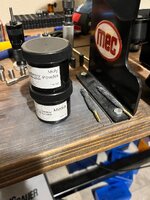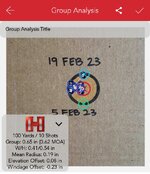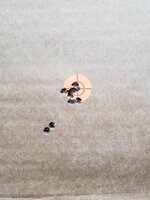- Joined
- Nov 7, 2018
- Messages
- 1,910
I probably do some unnecessary steps honestly. But start with virgin brass
1. Chamfer inside/outside of necks (this is mandatory. Especially inside)
2. Moly inside of neck and then expand .0005 under bullet diameter. Example. .2425 mandrel for 243 bullets.
3. Seat primer.
4. This one might be unnecessary for the virgin brass, but I like consistency. Brush inside of necks with nylon brush, and then moly inside of necks.
5. Add powder, seat bullets.
Fired brass is pretty similar. Except full length size, with a bushing that leaves the neck .001-.002 under mandrel diameter.
I anneal and trim and all that shit, but it’s not totally necessary honestly.
Most important step IMO is probably to brush the necks with a nylon brush before seating bullets. Neck tension consistency is the most important driver of accuracy and lower ES that I’ve found.
A simple once fired process would be
Lube
FL size
Mandrel
Brush Necks
Seat primers
Thanks for the info! Have you seen much benefit to a FL bushing / mandrel setup vs a standard FL die with expanding button? Currently messing with a standard Fl setup vs a Redding body die plus Lee collet(neck sizer) but haven’t tried the bushing and mandrel setup yet
Sent from my iPhone using Tapatalk



